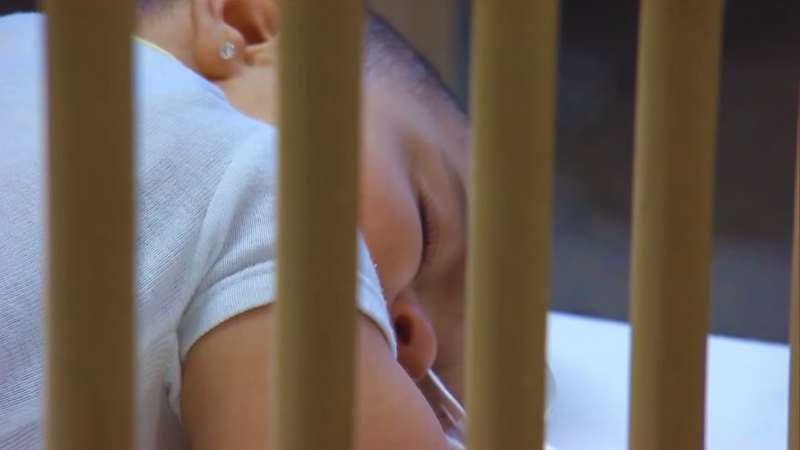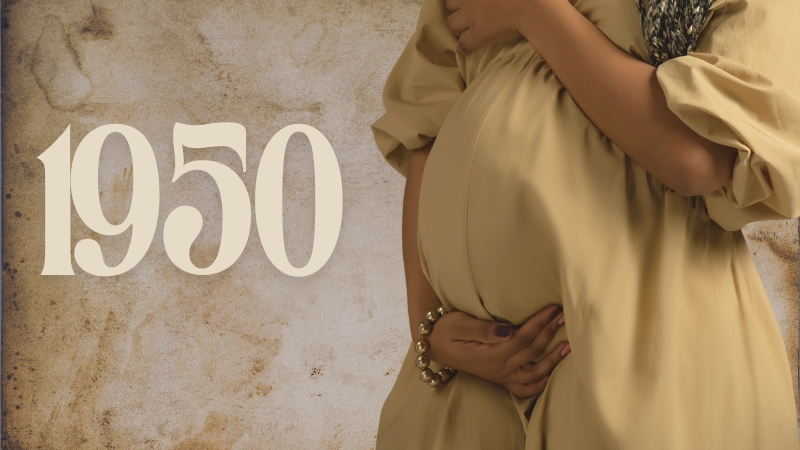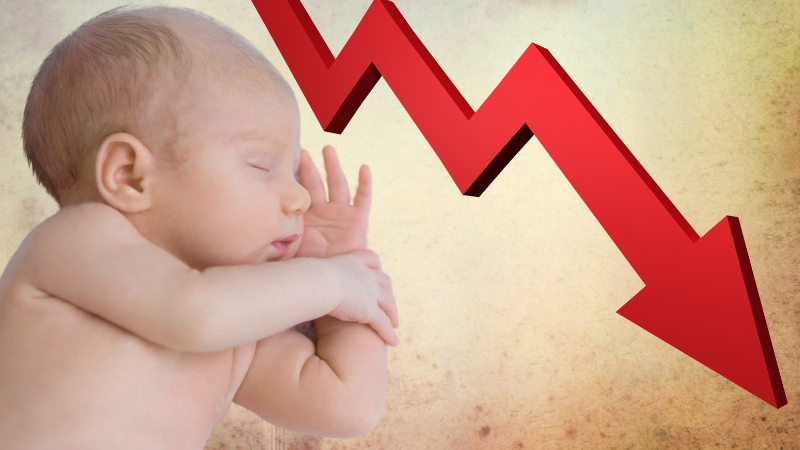This analysis presents an overview of the historical birth rate data in the United States, spanning from 1950 to 2024.
The fertility rate in the United States experienced a significant decline from 1950 to 2024, dropping from 3.1 births per woman to 1.6 births per woman—a decrease of 1.5 births or 47%.
This decline reflects broader global trends, driven by factors such as increased access to education, contraception, and healthcare, as well as societal shifts, including the rising participation of women in the workforce and a delay in childbearing.
Key statistics for 2025 indicate a continued downward trend, with projections suggesting the fertility rate may fall further, exacerbating the challenges already observed.
Economic considerations, urbanization, and evolving cultural norms also played key roles in shaping family planning choices.
By 2023, the U.S. fertility rate fell below the replacement level of 2.1 births per woman, which is required to maintain a stable population without immigration.
This trend poses challenges, including potential labor shortages, an aging population, and increased pressure on social security and healthcare systems, highlighting the importance of addressing demographic sustainability through policy adjustments.
Table of Contents
ToggleUS Birth Rate By Year
| Year | Birth Rate | Growth Rate |
|---|---|---|
| 2024 | 12.009 | -0.120% |
| 2023 | 12.023 | 0.090% |
| 2022 | 12.012 | 0.090% |
| 2021 | 12.001 | 0.090% |
| 2020 | 11.990 | 0.090% |
| 2019 | 11.979 | 0.090% |
| 2018 | 11.968 | -0.950% |
| 2017 | 12.083 | -0.940% |
| 2016 | 12.198 | -0.940% |
| 2015 | 12.314 | -0.930% |
| 2014 | 12.429 | -0.920% |
| 2013 | 12.544 | -1.980% |
| 2012 | 12.798 | -1.940% |
| 2011 | 13.051 | -1.910% |
| 2010 | 13.305 | -1.870% |
| 2009 | 13.558 | -1.840% |
| 2008 | 13.812 | -0.320% |
| 2007 | 13.856 | -0.320% |
| 2006 | 13.900 | -0.320% |
| 2005 | 13.945 | -0.310% |
| 2004 | 13.989 | -0.310% |
| 2003 | 14.033 | -0.360% |
| 2002 | 14.083 | -0.350% |
| 2001 | 14.133 | -0.350% |
| 2000 | 14.182 | -0.350% |
| 1999 | 14.232 | -0.350% |
| 1998 | 14.282 | -1.610% |
| 1997 | 14.516 | -1.590% |
| 1996 | 14.750 | -1.560% |
| 1995 | 14.983 | -1.540% |
| 1994 | 15.217 | -1.510% |
| 1993 | 15.451 | -0.260% |
| 1992 | 15.492 | -0.260% |
| 1991 | 15.532 | -0.260% |
| 1990 | 15.573 | -0.260% |
| 1989 | 15.613 | -0.260% |
| 1988 | 15.654 | 0.410% |
| 1987 | 15.590 | 0.420% |
| 1986 | 15.525 | 0.410% |
| 1985 | 15.461 | 0.420% |
| 1984 | 15.396 | 0.420% |
| 1983 | 15.332 | 0.760% |
| 1982 | 15.217 | 0.760% |
| 1981 | 15.102 | 0.770% |
| 1980 | 14.986 | 0.770% |
| 1979 | 14.871 | 0.780% |
| 1978 | 14.756 | -1.170% |
| 1977 | 14.931 | -1.160% |
| 1976 | 15.106 | -1.150% |
| 1975 | 15.281 | -1.130% |
| 1974 | 15.456 | -1.120% |
| 1973 | 15.631 | -2.500% |
| 1972 | 16.031 | -2.430% |
| 1971 | 16.431 | -2.380% |
| 1970 | 16.832 | -2.320% |
| 1969 | 17.232 | -2.270% |
| 1968 | 17.632 | -3.690% |
| 1967 | 18.308 | -3.560% |
| 1966 | 18.984 | -3.440% |
| 1965 | 19.660 | -3.320% |
| 1964 | 20.336 | -3.220% |
| 1963 | 21.012 | -2.600% |
| 1962 | 21.573 | -2.530% |
| 1961 | 22.134 | -2.480% |
| 1960 | 22.696 | -2.410% |
| 1959 | 23.257 | -2.360% |
| 1958 | 23.818 | -0.230% |
| 1957 | 23.874 | -0.230% |
| 1956 | 23.930 | -0.240% |
| 1955 | 23.987 | -0.230% |
| 1954 | 24.043 | -0.230% |
| 1953 | 24.099 | -0.230% |
| 1952 | 24.155 | -0.230% |
| 1951 | 24.211 | -0.230% |
| 1950 | 24.268 | 0.000% |
Source: Macrotrends.net
Interesting Fact
The U.S. birth rate reached an all-time low in 1936 when the TFR fell to 2.1 children per woman in the wake of the stock market crash of 1929. The next low occurred in 1976 when the TFR fell to another record low of 1.7. It then remained at about 1.8 for the first half of the 1980s, possibly held in check by the milder 1980s’ recession, before slowly climbing to today’s 2.1. The U.S. TFR is among the very highest of the developed countries and at a level that many low fertility countries, such as those of Europe, Japan, and South Korea, would very much like to achieve.
5 Years with The Highest Birth Rates

The early 1950s were characterized by a post-World War II phenomenon often referred to as the Baby Boom, particularly in Western countries according to Khan Academy.
This surge in birth rates was influenced by multiple factors, including economic prosperity, changing social dynamics, and government policies encouraging family growth.
Reasons for High Birth Rates in the 1950s

Post-War Optimism
After World War II ended in 1945, there was a significant feeling of hope and optimism, prompting families to start or expand. This period saw an increase in birth rates as soldiers returned home and people sought to build stable family lives.
Economic Boom
History.com notes that there was strong economic growth in the post-war era, particularly in countries like the United States. The economy was thriving, and many families felt financially secure enough to have more children.
Government Policies
Many governments provided incentives such as tax breaks, improved maternity benefits, and better healthcare services. In the United States, the G.I. Bill also provided financial support to veterans, making family formation more accessible.
Traditional Family Values
During this time, the cultural emphasis on traditional family values was strong. The role of women was largely oriented around homemaking, which contributed to larger family sizes.
5 Years with The Lowest Birth Rates
- 2024: 12.009
- 2021: 12.001
- 2020: 11.990
- 2019: 11.979
- 2018: 11.968
The years from 2018 to 2024 represent a sharp decline in birth rates, which can be attributed to various socio-economic conditions and shifts in family planning dynamics. A notable impact during these years is the influence of the COVID-19 pandemic.
4 Reasons for Low Birth Rates in Recent Years
- Economic Challenges: Many economies were hit hard by the pandemic, leading to financial insecurity. Job losses, increased cost of living, and economic uncertainty discouraged many couples from having children according to the IMF.
- Changing Family Dynamics: Cultural changes have also impacted decisions around childbirth. Increasing participation of women in the workforce, changing attitudes towards marriage and family formation, and increased emphasis on individual autonomy have resulted in fewer births.
- COVID-19 Pandemic: The pandemic brought uncertainty, which influenced many people to delay or avoid having children. Concerns over health, access to healthcare, financial stability, and a general sense of insecurity led to lower birth rates during this time as per Brookings.
- Increased Cost of Living: The rising cost of living, including healthcare, education, and housing, has made many couples reconsider or delay starting a family.
“America is not having enough babies to keep our populations up, so we need immigrants that have been vetted to do work,”
Clinton said it at a campaign event for Vice President Kamala Harris in Fort Valley, Georgia.
5 Years with The Highest Growth Rate

- 1979: 0.780%
- 1980: 0.770%
- 1981: 0.770%
- 1982: 0.760%
- 1983: 0.760%
The highest population growth rates in the United States during the late 1970s and early 1980s can be attributed to a convergence of several key factors that created favorable conditions for growth.
First, the economic recovery following the turmoil of the 1970s played a significant role. The U.S. began stabilizing after the 1973 oil crisis and the resulting stagflation.
By the early 1980s, a more stable economic environment boosted job creation and economic optimism, encouraging more people to start families according to the Bill of Rights Institute.
Additionally, this period saw the maturation of the post-World War II baby boom generation. Many individuals born during the baby boom reached adulthood, contributing to a surge in birth rates as they began having children of their own.
Immigration also played a substantial role. Legislative changes, particularly following the Immigration and Nationality Act of 1965, led to increased migration from Latin America and Asia.
Finally, shifting social norms led to more flexible approaches to family planning. Compared to the declining birth rates of the 1960s and early 1970s, the late 1970s saw an uptick as economic and social circumstances improved according to SGP research.
5 Years with The Lowest Growth Rate (Most Negative)

- 1968: -3.690%
- 1967: -3.560%
- 1966: -3.440%
- 1965: -3.320%
- 1964: -3.220%
The years of lowest growth rates in the U.S. during the late 1960s and early 1970s were shaped by a combination of profound social, political, and cultural shifts:
Vietnam War
- The Vietnam War (1955-1975) was a major source of national unrest.
- The draft and the widespread anti-war protests created anxiety and uncertainty, leading many to postpone family planning.
Civil Rights Movement
- The civil rights movement was in full force, with landmark events that brought both progress and tension.
- The focus on achieving social equality often shifted attention away from family growth.
Changing Social Norms
- Shifts in attitudes towards traditional family structures and marriage were significant.
- Women’s empowerment and the rise of the feminist movement meant more women were pursuing careers and education over starting families.
Economic Conditions
- Economic uncertainty, partly fueled by war expenditures, led to caution about expanding families as per the Institute of Developing Economics.
5-Year Periods with Notable Trends
“This past decade’s 7.4% population increase was lower than the previous decade’s 9.7% increase and was, in fact, the second lowest percent increase ever. Only the 1930s had slower growth.” – Marc Perry, Senior Demographer, Population Division pic.twitter.com/9uuf1UvfZR
— U.S. Census Bureau (@uscensusbureau) August 12, 2021
- 1950-1955: Consistently high birth rates with very minimal decreases, reflecting strong post-war optimism.
- 1965-1970: Notable decline in birth rates, possibly due to societal transformations and economic uncertainties.
- 1980-1985: Positive growth rate after a period of decline, indicating a stabilization or recovery period.
- 2018-2024: Lowest birth rates and a generally stagnant or slightly negative growth rate, reflecting challenges of recent times such as the pandemic and economic pressures.
General Observations
- Long-Term Decline: Birth rates have generally declined over the decades, with a sharp contrast between the 1950s and the present. This aligns with societal changes such as increased access to birth control, changing gender roles, economic uncertainties, and shifting family dynamics.
- Baby Boom to Bust: The peak of the “baby boom” era in the 1950s is followed by decades of consistent decline, indicating a shift from larger to smaller family norms.
- Recent Years: The 2020s reflect particularly low birth rates, potentially affected by economic insecurity, societal priorities, and the direct impact of global events like the pandemic.
Methodology
We sourced reliable historical birth rate data from trusted databases such as Macrotrends.net to ensure accuracy.
The focus was on identifying periods with the highest and lowest birth rates, along with growth rate fluctuations.
Added historical context (e.g., post-WWII Baby Boom, COVID-19 pandemic) from reputable sources like Khan Academy and the IMF to explain fluctuations in birth rates.
Organized the article into sections for clarity, highlighting specific time periods with notable trends.
Ensured consistency between demographic data and economic/social events influencing birth rates.
References
- Macrotrends – U.S. Birth Rate 1950-2024
- Khan Academy – Baby Boom
- History.com – The Post World War II Boom: How America Got Into Gear, G.I. Bill, Vietnam War Protests
- IMF – World Economic Outlook – All Issues
- Brookings – Half a million fewer children? The coming COVID baby bust
- Bill Of Rights Institute – The 1973 Oil Crisis and Its Economic Consequences
- SGP – The Changing Demographic Profile of the United States
- IDE.go – The Vietnam War
Related Posts:
- How Washington DC’s Population Has Evolved Over the…
- Oregon’s Population Is Rising, but The Pace Has…
- Collin, Tarrant, and Denton Counties Drive North…
- What’s the Legal Difference Between a Certificate of…
- What Is the Average Human Height, and How Has It…
- How Have U.S. Birth Rates Changed Over the Last 20 Years?








